Wallenberg: A biography and exhibit in San Francisco
'There is a room here and waiting for you .. ' The story of Raoul Wallenberg by Ingrid Carlberg
-
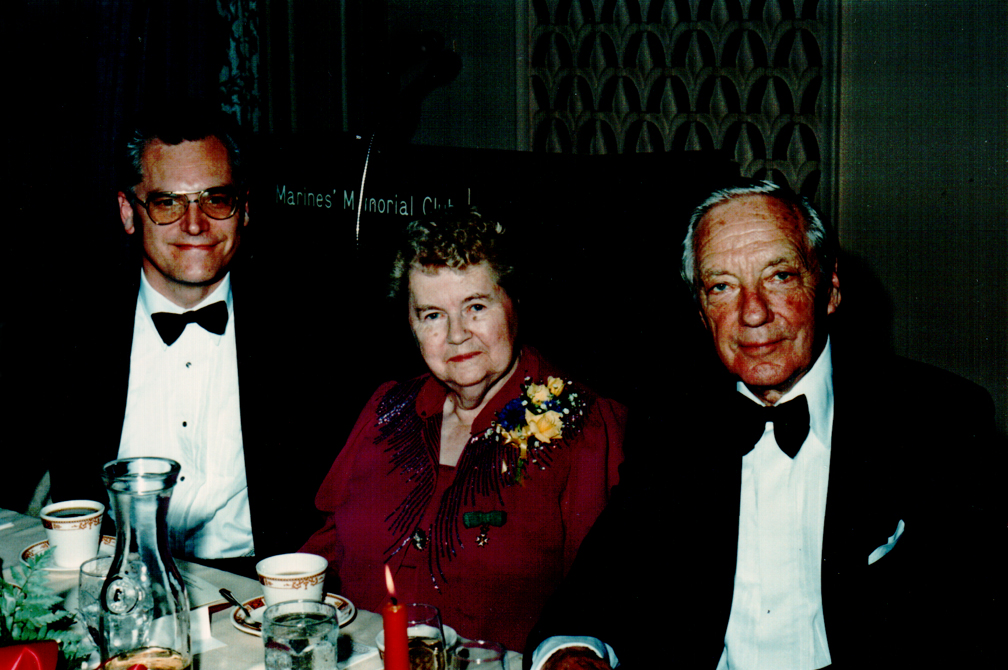 The author Ted Olsson, Karin Person (editor of Vestkusten), Ambassador Per Anger. © Ted Olsson
The author Ted Olsson, Karin Person (editor of Vestkusten), Ambassador Per Anger. © Ted Olsson -
-
On October 28 the Swedish journalist and author Ingrid Carlberg lectured on Raoul Wallenberg at the Jewish Community Center of San Francisco (JCCSF), to a sold-out audience. In May 2012, during the centennial of his birth, Carlberg's 700-page biography of the great Swedish humanitarian was published first in Swedish: ”Det står ett rum här och väntar på dig…” Berättelsen om Raoul Wallenberg ("There is a room here and waiting for you ... " The story of Raoul Wallenberg ), then in English the next year. It won The August Prize for Nonfiction in 2012 (named for August Strindberg) and The Swedish Academy Prize for Biography in 2013. And last year, the Swedish Institute produced a large exhibition on Wallenberg.
The occasion for the lecture was the exhibit on Raoul Wallenberg held at the center until November 30. JCC’s Center for the Arts director, Lenore Naxon and Katarina Sagerström of the consulate who assisted the JCC in producing this exhibit were pleased with the audience of more than 350 for the lecture, reception and exhibit.
The inspiration and facilitator for bringing the SI exhibit and impressive lecture to San Francisco was Consul General of Sweden Barbro Osher, who introduced the speaker.
Carlberg’s illustrated lecture was very interesting even to those who are familiar with the legendary Wallenberg. He is an honorary citizen of five countries (Israel, Hungary, Australia, Canada and the U.S.) and honored by many more for his humanitarianism in saving up to 200,000 Hungarian Jews from the Holocaust. -
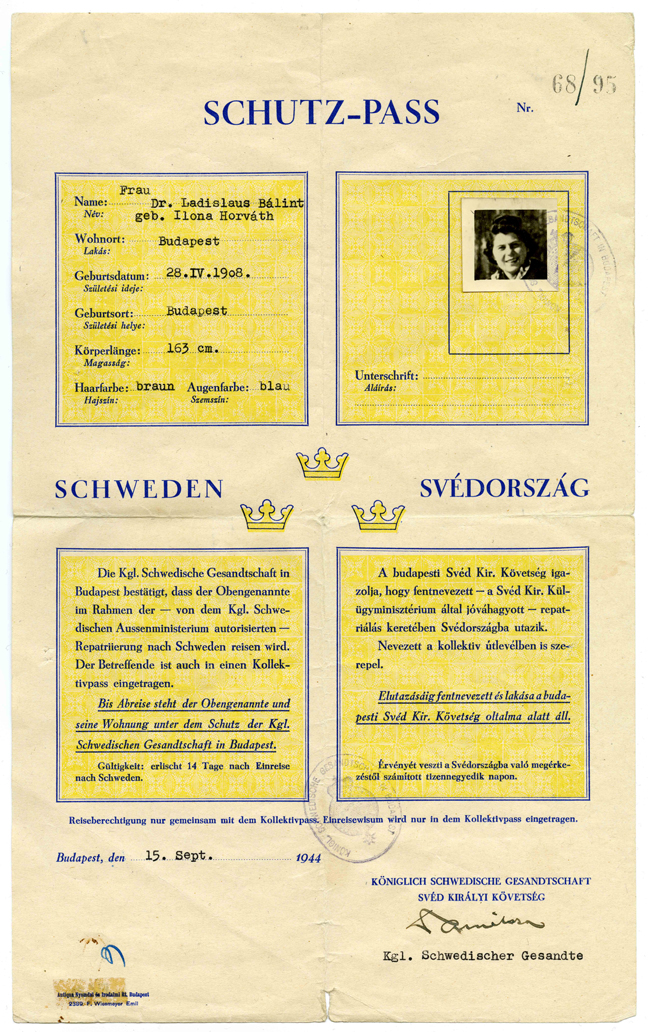 Wallenberg’s Schutz-Pass, the “official” document that saved thousands.
Wallenberg’s Schutz-Pass, the “official” document that saved thousands. -
-
Wallenberg’s preparation
Wallenberg’s youth is well known. Coming from the illustrious family of financiers, he was born on August 4, 1912. His father died three months before his birth, his maternal grandfather, three months after his birth. He was raised by his mother and maternal grandmother, under the watchful eye of his paternal grandfather, Gustaf Wallenberg. His mother remarried Fredrik von Dardel about a decade later, providing him with his step-brother, Guy, the distinguished Swedish physicist-professor, and his step-sister, Nina Lagergren.
Grandfather Gustaf, from the famous Swedish financial dynasty and himself a Swedish envoy to Japan, was determined that Raoul would be groomed to become an eminent businessman. Farfar Gustaf sent him to Paris to study, and he developed his skill in languages. After his obligatory service in the National Guard, which revealed that he was a natural leader, his grandfather sent him to the University of Michigan. There Raoul demonstrated not only a skill in architecture but also a creativity in art. During his summers he travelled, even coming to California and San Francisco on August 16, 1932 for more than a week, during which time he had dinner at home with my folks (who were his age) and they brought him to Sveadal to relax.
Unfortunately his UM degree in architecture did not qualify him to practice as an architect back in Sweden; so, he had to find other employment. This time Farfar sent him to work for a Swedish company in Cape Town, South Africa. Six months later he worked for another Swedish firm in Haifa, Israel. By 1936 he had returned to Sweden looking for a job, and the next year his grandfather died. Ms. Carlberg says his uncles were of no help bringing him into the family business but he got a job with the Central European Trading Company, dealing in food, headquarted in Stockholm, and run by a Hungarian Jew named Kalman Lauer. His linguistic and business skills proved important, and by 1942 Raoul was a joint owner and the company’s international director, frequently travelling to Budapest. His skills and travels for the company as a neutral Swede to Germany and occupied-France gave him an intimate understanding of the European situation and Germany’s bureaucratic methods.
As Carlberg tells the story, by the mid-1940s Roosevelt was becoming very concerned for the plight of the Jews as Hitler’s plans were becoming apparent. The U.S. set up an office for refugee relief headed in Sweden by Iver Olsen. The U.S. tried to get any of the five neutral countries to help but only Sweden was willing. Olsen talked with the Chief Rabbi of Stockholm and his committee for helping the Jews of Europe, among whom was Lauer. As it happened Olsen’s U.S. War Refugee Board (WRB) was in the same building on Strandvägen as Lauer’s headquarters. They were looking for a clever man to lead a dangerous mission. The U.S. was willing to pay the person’s salary if the Swedes would make him a member of their delegation to Hungary with diplomatic immunity. Lauer recommended Wallenberg as that man. -
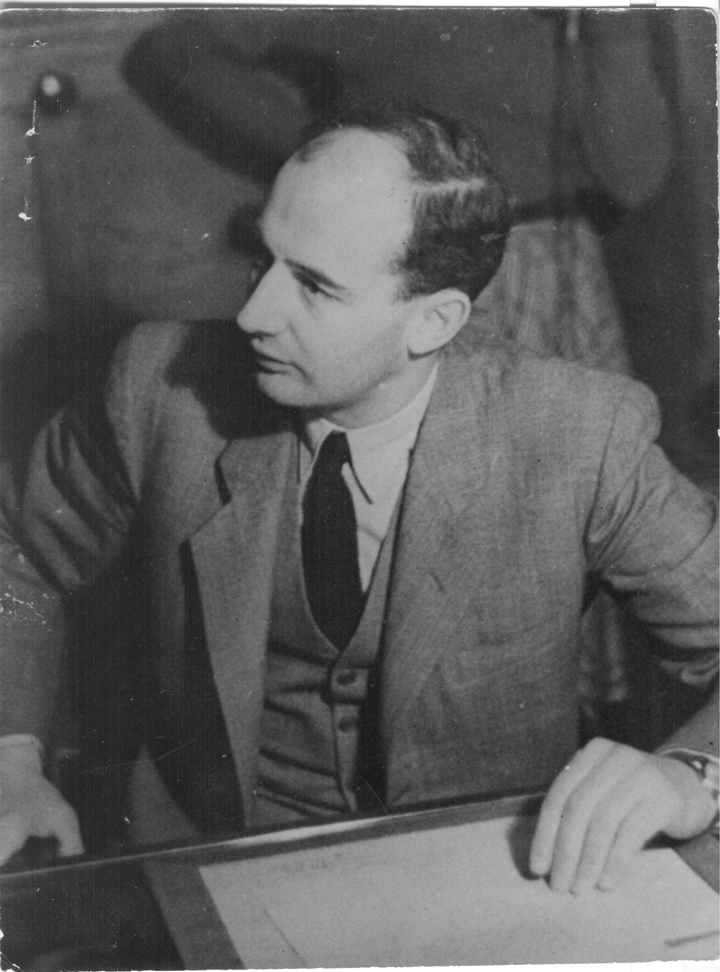 32-year-old Wallenberg thwarting the Nazis by saving many Hungarian Jews.
32-year-old Wallenberg thwarting the Nazis by saving many Hungarian Jews. -
'The Scarlet Pimpernel' in Budapest
So it was that the unknown Raoul Wallenberg was dispatched as a special envoy to the Swedish legation in Budapest. Hungary was already a member of the Axis Powers in 1940 and at the Battle of Stalingrad in June, Hungary had suffered disastrous losses (84 percent of its troops) in Germany’s invasion of the Soviet Union. Wallenberg assumed his new duties in Budapest in July 1944, barely in time. Two days before his arrival, Hitler himself had visited the Hungarian leader Miklos Horthy, who was resisting Jewish deportations. This was the deteriorating situation which Raoul faced shortly after his arrival as the remaining 200,000 or so Hungarian Jews huddled in Budapest were being confined in ghettos for shipment to Auschwitz.
Wallenberg was not alone. Others there before him were also secretly trying to help Jews escape. Carlberg mentioned Carl Lutz of the Swiss delegation, who was active in this effort with his wife. At the Swedish delegation both the senior diplomat Per Anger and Valdemar Langlet, head of the Swedish Red Cross in Hungary, as well as the Papal emissary were already at work and welcomed the initiative and energy of the new Swede. Lutz had been issuing Swiss protection passes to Jews. After Germany invaded Hungary on March 19, 1944, Anger began issuing provisional passports and special certificates to prevent and protect Jews from internment and deportation, but with Wallenberg’s arrival, this kicked into high gear.
The artistic Wallenberg designed the official-looking Schutz-Pass (protection documents) claiming that the bearer was under Swedish protection and returning to Sweden. By October 15 the Nazis seized power and the Hungarian threats against the Jews turned to German action. Curiously the three crowns were not oriented correctly and this official Swedish document was all in English, but while the German and Hungarian officials questioned the legitimacy of the papers, they allowed the persons to be safeguarded by the Swedes.
Originally Wallenberg commandeered the house next to the Swedish Embassy as a Swedish library, in order to secretly house and feed ultimately thousands of Jews. Suddenly his Department of Humanitarianism was establishing these Swedish safehouses, which began popping up all over Budapest, as Swedish cultural and artistic institutions. When the Germans established a new International Jewish ghetto in another part of town, Wallenberg established a new operation center nearby. -
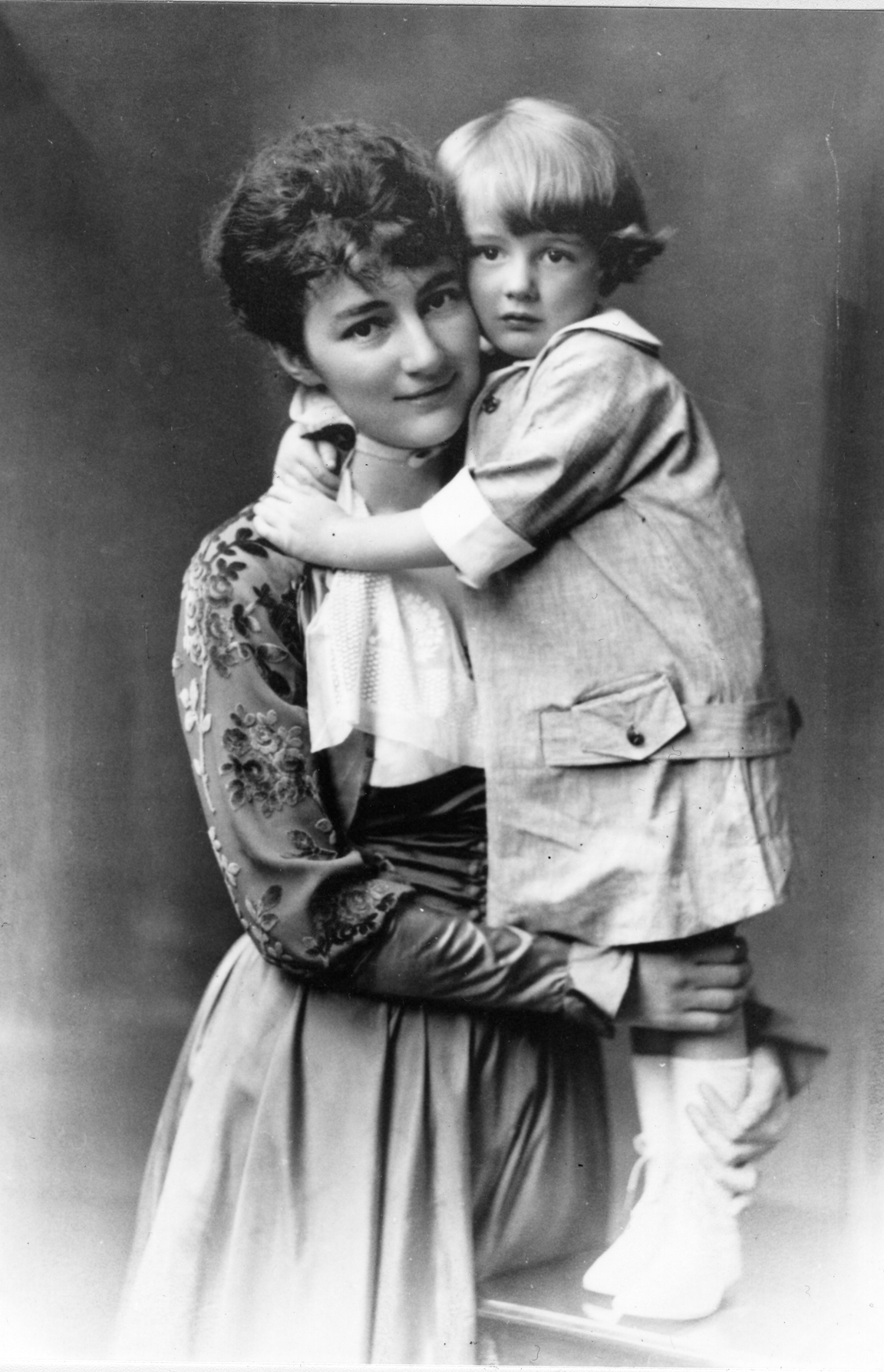 Young Wallenberg and his mother. (c) Swedish Institute from Raoul Wallenberg centennial exhibit. Used by permission of the Jewish Community Center of San Francisco.
Young Wallenberg and his mother. (c) Swedish Institute from Raoul Wallenberg centennial exhibit. Used by permission of the Jewish Community Center of San Francisco. -
The long denouement
In less than six months, this band of humanitarians led by the audacity and energy of the young Swede, with the organizational and logistical skill of this supreme quartermaster, was feeding all of these refugees he was housing. He received whatever financial aid he needed from the Americans to maintain his supplies and refugee efforts; he reported both to Sweden and to the WRB.
But as brilliant as he was in thwarting the Germans in Hungary, Wallenberg was politically naïve about the Soviets. As they besieged the city and ultimately broke the German resistance, like many others, he viewed the Soviet army as liberators. However, the Soviet hierarchy ordered his arrest and detention, and Wallenberg's last known communication stated that he had been summoned on January 17, 1945 to appear at General Malinovsky’s headquarters to answer charges of espionage. His last words were: “I’m going to Malinovsky’s … whether as a guest or a prisoner I do not know yet.”
He and Anger were detained but after several months Anger was released; Wallenberg and his driver/assistant, Vilmos Langfelder, were never heard of again. Wallenberg was sent to the notorious Lubyanka prison at KGB headquarters in Moscow. In the West throughout the Cold War years occasional reports from fellow prisoners would alternately tell of his death or teasingly suggest that he still lingered there. -
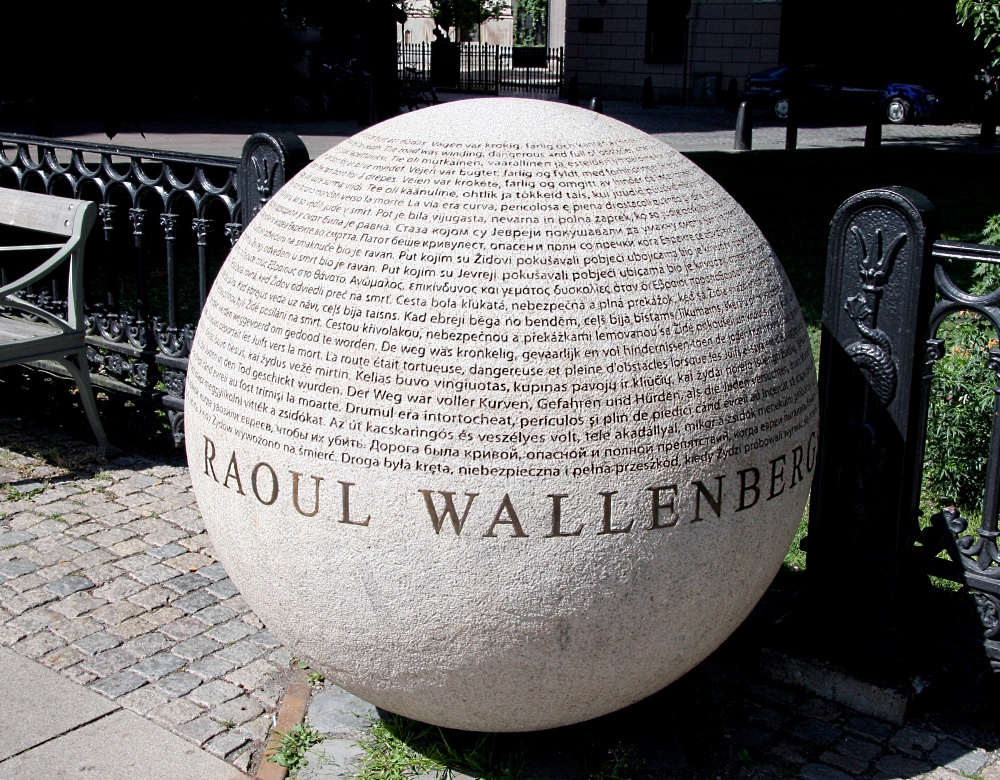 The Raoul Wallenberg Memorial in Stockholm, Sweden. Photo courtesy of pntphoto/Pavel Trebukov via Creative Commons license
The Raoul Wallenberg Memorial in Stockholm, Sweden. Photo courtesy of pntphoto/Pavel Trebukov via Creative Commons license -
What’s new?
The news from Carlberg’s research was twofold. The Soviet’s were suspicious of Wallenberg, not merely for the work he was doing, but because they considered him a spy for someone. Because of his family’s financial connections, the neutral Swedish government had made his grand uncles special envoys to Germany and the United Kingdom. Was their nephew really the innocent naïf he appeared? Or was he working for the Swedes? Or the U.S.? The UK? Who knows; best to be safe and make him disappear.
Secondly, new revelations show that the Americans were responsible for selecting Wallenberg to be sent under neutral Swedish diplomatic protection to Hungary to do all he could to save the Hungarian Jews. However, Iver Olsen was not merely altruistic in Sweden as head of the WRB, but he was actually the OSS agent in charge of currency for all OSS European projects. He was looking for the right man in Hungary. Whether either the idealistic young Wallenberg knew any of this or whether the Soviets did is not known.
Wallenberg's family continued the search for him to the end of the century and they search still for definitive information about him. One of stepsister Nina’s daughters, Nane Maria Lagergren married Kofi Annan, the former UN Secretary General, and maintains her humanitarian heritage with him. The other of Raoul’s nieces, Louise, continues the family’s pursuit of knowledge about her uncle. Professor Guy von Dardel similarly pursued information on his brother’s fate, amassing 50,000 pages of documents on the topic. -
“The Righteous Among Nations”
What is known is what Wallenberg accomplished in half a year, saving almost 200,000—as Israel records him, along with others at Yad Vashem: “Righteous Among Nations.” How he is revered by democracies and humanitarians around the world is a testament to his having become the global epitome of the courageous humanitarian.
It is also known what Per Anger, Raoul’s colleague accomplished and the fact that he too never gave up the search for his friend. He even spoke with Soviet President Mikhail Gorbachev to discover the truth about Raoul.
After this assignment Sweden appointed him to head their international aid effort. From there he became Sweden’s Ambassador to Australia and then to Canada—he served in four of the five countries that made Wallenberg an honorary citizen and was himself made an honorary citizen of Israel, and was honored as one of the Righeous at Yad Vashem. In April 2002 Sweden awarded him their highest award for any Swedish citizen: Illis Quorum Meruere Labores (For Those whose Labors Deserve such recognition). After his death on Aug. 25, 2002, Sweden created the Per Anger Prize for humanitarian work and initiatives on behalf of Demoracy. Per Anger, Sweden’s Consul General in San Francisco was a personal friend of mine and of my family, admired by all, always the kind and distinguished diplomat.
Last year when President Obama paid an official visit to Sweden, he presented Raoul’s sister, Nina Lagergren, with the U.S. Congressional Gold Medal, posthumously bestowed upon her brother on July 26, 2012. And on the centennial of his birth, many nations issued Wallenberg stamps. Sweden’s contained a photo of Wallenberg in front of a Schutz-Pass bearing the picture of a young girl. Carlberg found her and wrote the story last year (Dagens Nyheter, 26Aug2013; http://www.ingridcarlberg.se/aktuellt/ — click to read the story in English).
Of heroes and heroism
Wallenberg's father died before his birth, wishing simply that his son might be a good and humble person. He was that and more.
It was good to be reminded at the Jewish Community Center of these Swedish heroes. It was a continuation of the JCC’s theme as stated by Naxon: One courageous person can make a world of difference. -
Ted Olsson
San Francisco -
-
